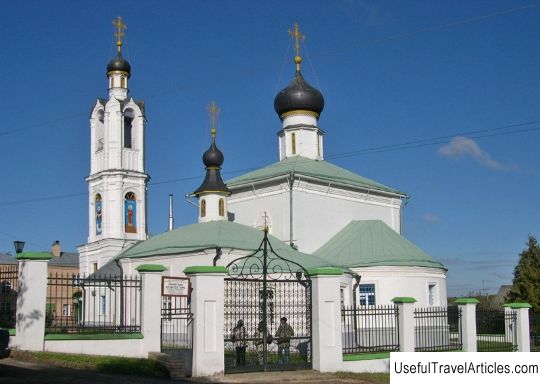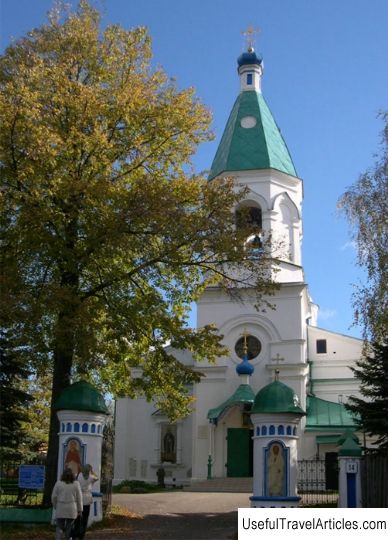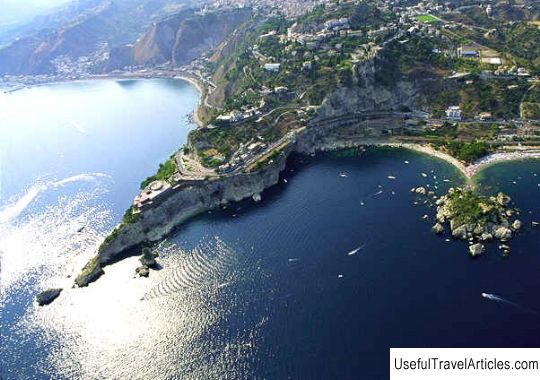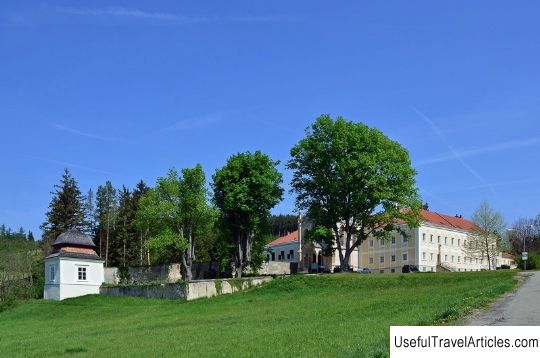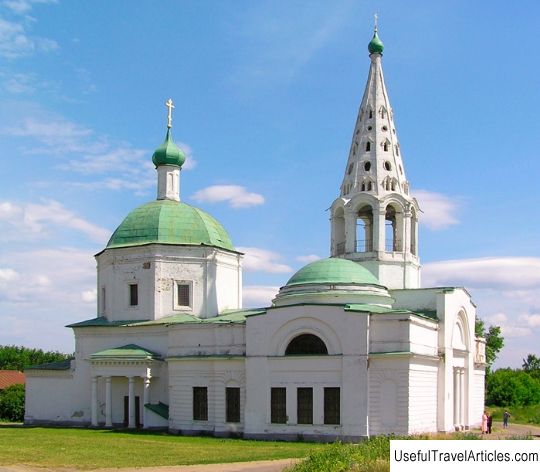Volokolamsk Kremlin description and photo - Russia - Moscow region: Volokolamsk
Rating: 9,4/10 (890 votes) 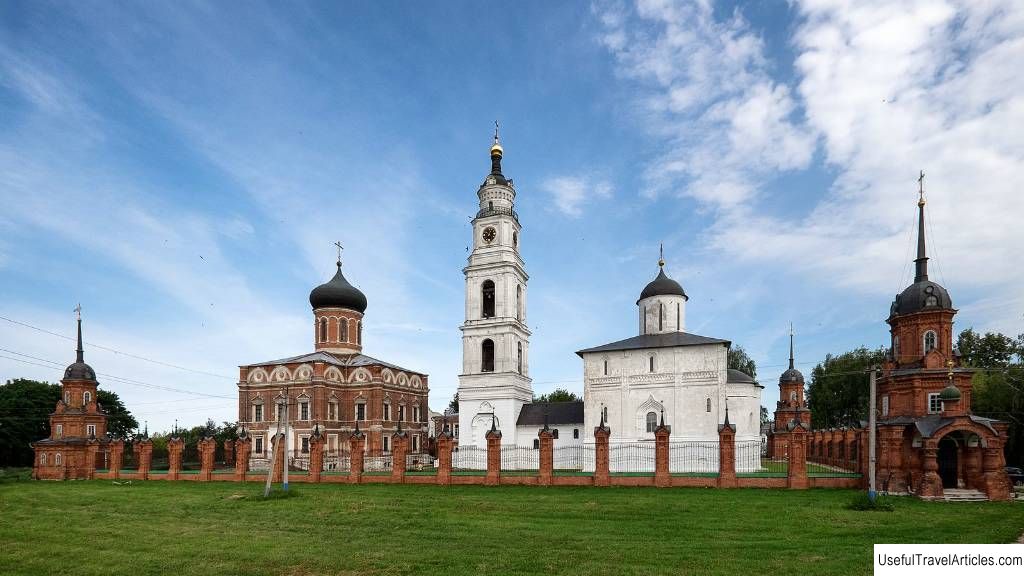
Volokolamsk Kremlin description and photos - Russia - Moscow region: Volokolamsk. Detailed information about the attraction. Description, photos and a map showing the nearest significant objects. Photo and descriptionThe cathedral complex of the Volokolamsk Kremlin surrounded by high ramparts is a picturesque and interesting place. One of the cathedrals is a functioning temple, the other houses a local history museum telling about the history of the city. History of VolokolamskThe first settlements on the territory of the Volokolamsk Kremlin date back to the first millennium BC. er . Representatives of Dyachkov's culture lived here. At the site of their settlement, fragments of characteristic pottery were found. They were the ancestors of Finno-Ugrians . Probably, it was from them that some Finno-Ugric names remained in the vicinity. Already in the XI century there was an old Russian settlement. It was originally called Lamsky Drag or simply Drag. The trade route " from the Varangians to the Greeks " ran here. It was a land crossing of ships from the tributary of the Volga Lama to the tributary of the Oka Voloshnya. "Lama" is once a Finno-Ugric name, which means a river, flowing water. The port was an important strategic place: the one who controlled it could dictate his will to numerous merchants. According to legend, the city was founded by Yaroslav the Wise . It was he who brought the Lamsky Volok here, before that it was located in another place - near the modern village of Starovolotskoye. The first chronicles mention the disputes of the princes for control over this important place. Initially, a wooden fortress was erected here. Archaeologists have found the remains of old fortifications: the city was surrounded by high ramparts with rows of thick pillars stuck there. In some places the shafts reached six meters in height. And now they surround the Kremlin hill, and in the local history museum you can see the alleged model of these wooden fortifications. The city changes hands many times. It is controlled either by Novgorod or Vladimir princes. In 1178, the prince of Vladimir Vsevolod the Big Nest burns it to the ground - this is evidenced by the chronicle story. Sixty years later, Batu burns it. In the XIII century Volokolamsk was divided by Moscow and Novgorod, then for some time it was controlled by the Lithuanian prince Svidrigailo , then for several years it became an independent principality and again lost its independence. During the Time of Troubles, Poles occupied the city for two years. During these years, Volokolamsk is a stone fortress, protecting Moscow lands from the northwest. But Volokolamsk is gradually losing its significance. In the 18th century, no one expected the appearance of enemies here. Trade routes have shifted and no drag has existed for a long time. Volokolamsk became a provincial county town. At the end of the 18th century, the dilapidated stone Kremlin was dismantled, leaving only high earthen ramparts. Volokolamsk considers itself older than Moscow: in the annals it begins to be mentioned 12 years earlier. The Resurrection CathedralThe pearl of the Volokolamsk Kremlin is The Resurrection Cathedral ... It dates from around 1480. It was built by order of Prince Boris Volotsky , son of the Moscow prince Vasily the Dark . During these years Volokolamsk is independent and is the center of the Volotsk principality. Prince Boris is actively strengthening his possessions, building fortresses and new churches. At the same time, Iosifo-Volotskiy Monastery was built. The Resurrection Cathedral is white-stone, with strong walls and narrow loopholes, it was created so that in case of an attack it would be possible to hide and defend in it. This is a typical four-foot old Russian temple, with an altar with three apses. Once it was surrounded by a gallery-gulbisch, but now it is dismantled. Initially, the walls of the cathedral were completed with typical semicircular zakomars, but already at the end of the 17th century, the usual hipped roof was made. In the middle of the 18th century, a new entrance was pierced and a porch was built from the western facade. The temple contains fragments of the original 15th century murals and 19th century murals. The Bell Tower was built in the 18th century. Initially, it stood separately, then it was connected to the temple itself by a covered walkway. The modern five-tiered bell tower was built already in 1880 according to the project of the architect N. Markov . He designed it taking into account the appeared St. Nicholas Cathedral - it visually connects both churches and is the dominant feature of the entire complex. The temple functioned until 1930. In the 80s of the XX century, its restoration was carried out and the restored building was transferred to the museum, and in 1993 it was returned to the Church. The parish has officially appeared here since 2000. Nikolsky CathedralThis is a one-domed cathedral, created with a focus on ancient Russian architecture. It was built in memory of the soldiers who died in the Crimean War of 1853-1853. The cathedral was closed during the Soviet era. Almost nothing has survived from its former decoration. In 1941, the head of the temple collapsed. And those premises that were suitable for use were placed in a camp for German prisoners of war in the last years of the war. The cathedral was restored in the 70s of the XX century. The restoration was directed by the architect Yu. D. Belyaev . The dome was restored, although, of course, no cross was placed on it. After restoration, the cathedral housed a museum . In the 1880s, the entire complex was enclosed brick fence with gate and corner turrets . The fence did not pass along the borders of the former fortress, but inside it. It was badly damaged during the war and was restored in the 80s of the XX century under the guidance of the architect N. B. Pankova. The gate turrets were not restored, but the corner ones were restored. Now in the southeastern tower there is a Annunciation chapel . Museum Volokolamsk Historical and Architectural Museum still occupies the building of the Nikolsky Cathedral. The exposition is located on two floors. As in any self-respecting local history museum of the Moscow Region, there is a mammoth - or rather, its tusk. The first part of the exposition is occupied by models and installations, telling about the life of the most ancient people in these territories. One of the installations tells in detail how the portage was arranged, the other - about how the city looked in the XII century. There is a very good archaeological collection : the settlement of the Volokolamsk Kremlin was excavated in Soviet times in sufficient detail, it has been well studied, and many finds from these excavations can be seen in museum showcases. reconstruction of a rich princely costume : this is Prince Svyatoslav with his bride, the daughter of Andrei Bogolyubsky. A separate exposition is dedicated to the life and everyday life of Volokolamsk district in the 17th-19th centuries. These are reconstruction of a peasant dwelling , richly carved wooden platbands, peasant and bourgeois costumes, collection of kerosene lamps. And, finally, several rooms are dedicated to the heroic defenders of the city during the Great Patriotic War . In the fall of 1941, Rokossovsky's 16th Army defended the capital. The Germans were advancing from the west through the Volokolamsk region. In October, after stubborn battles, Volokolamsk was occupied by the Germans, and the front line moved almost close to Moscow. It was in seven kilometers near Volokolamsk that the famous battle of 28 Panfilov's men took place, when in November 1941 28 people held their position for four hours and destroyed eighteen enemy tanks. The modern memorial complex in honor of the Panfilov heroes at the battle site is also under the jurisdiction of the Volokolamsk Museum of Local Lore. And the exposition of the Nikolsky Cathedral presents dioramas, dedicated to the liberation of Volokolamsk on December 20, 1941 from the Nazi invaders. The museum has temporary exhibitions in a separate room. There is a observation deck on the bell tower, from which you can see the whole city. You can climb it. Church of the Nativity of ChristNot far from the Kremlin prefabricated complex there is another church. This is the Church of the Nativity of Christ. It has been known since XV century . The current building was built in 1776 with merchant donations. The names of benefactors are known - Volokolamsk tradesman Kalinin and Moscow merchant Petrov . In 1835, merchants Ivan Bozhanov and Ivan Smirdin donated a refectory to the church. At the very beginning of the 20th century, a bell tower appeared near the temple. It was built by the architect V. Zhigarlovich . In Soviet times, the temple lost its architectural appearance - the upper tiers of the bell tower and the dome top were destroyed, the building turned out to be one-story and was occupied by various city institutions. Now the temple has been handed over to believers, the dome over it has been restored. In front of the temple there is now a monument to St. Prince Vladimir - the baptist of Russia. Notes
         Topic: Volokolamsk Kremlin description and photo - Russia - Moscow region: Volokolamsk. |

